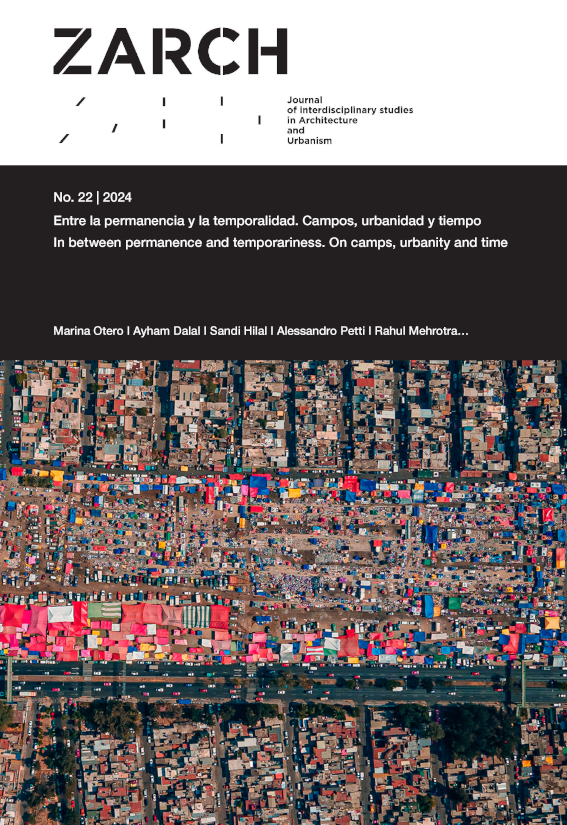Temporary Use Toolkit. Tools for the reactivation of the urban voids
DOI:
https://doi.org/10.26754/ojs_zarch/zarch.2024229874Keywords:
urban regeneration, temporary uses, reuse, abandoned buildings, public heritage, Temporary Use ToolkitAbstract
European cities have countless unutilized or underused buildings. Many of them are part of a public heritage that cannot be maintained and, therefore, have become part of urban ruins deactivated from their life cycle. Faced with this situation, since the eighties, innovative strategies began to be developed that explored the temporary use of these buildings. This has required new forms of relations between public administrations and citizens, as well as other models of management and regulatory regulation. European institutions, very aware of this problem, are promoting projects aimed at promoting the reuse and reactivation of empty buildings through urban regeneration processes through the implementation of temporary uses. In this context, projects have been developed aimed at proposing strategies focused on the problem of disuse and underutilization. The Temporary Use Toolkit, intended for both public institutions and citizens, establishes a methodology that allows the complexity of processes to be addressed under a simplified sequential process.
Downloads
References
Álvarez, Paula; Santiago Cirugeda. Arquitecturas colectivas. Sevilla: Vibok, 2011.
Arnstein, Sherry R. “A ladder of citizen participation”, Journal of the American Planning Association, vol. 35, n. 4 (1969): 216-224.
Barberis, Valerio; Sandven, Hakon, (coord.) Sustainable & Circular RE-Use of spaces & buildings. Handbook. Urban Agenda Paternship on Sustainable Use of Land and Nature-Based Solutions, 2019.
Bishop, Peter; Williams, Lesley, The Temporary City. London, New York: Routledge, 2012.
Bürgin, Matthias; Cabane, Philippe. Akupunktur für Basel: Zwischennutzung als Standortentwicklung auf dem Areal des DB_Güterbahnhofs in Basel. Basilea: Urbane Strategien Projektentwicklung Kommunikation, 1999.
Campagnoli, Giovanni. Riusiamo l’Italia. Milano: Il Sole 24 ore, 2019.
Carta, Maurizio. Futuro. Politiche para un diverso presente. Rubbettino: Soveria Mannelli, 2019.
Fernández, Manu; Gifreu, Judith. El uso temporal de los vacíos urbanos. Barcelona: Diputació de Barcelona, 2016.
Ferreri, Mara. “The Seductions of Temporary Urbanism”, Ephemera. Theory and Politics in Organization. Vol. 15, n. 1 (2015): 181-191.
Galdini, Rossana. Temporary uses in contemporary spaces. A European project in Rome. Cities, 96 (2020). https://doi.org/10.1016/j.cities.2019.102445
Grávalos Lacambra, Ignacio y Di Monte, Patrizia. “Nuevos paradigmas de la ciudad inacabada: la reactivación de espacios abandonados mediante usos temporales” en Ciudad y Territorio. Estudios territoriales, vol. 54, n. 214 (2022): 799-812. DOI: https://doi.org/10.37230/CyTET.2022.214.1
Grávalos Lacambra, Ignacio y Di Monte, Patrizia. “La reprogramación de la ciudad: consideraciones urbanas y sociales en torno al programa “estonoesunsolar” en Ciudad y Territorio. Estudios territoriales, vol. XLVI, nº179 (2014): 127-137.
Inti, Isabella; Cantaluppi, Giulia; Persichino, Matteo. Temporiuso. Manuale per il riuso temporaneo di spazi in abbanono. Milano: Altreconomia, 2014.
Killing Architects. Urban Tactics. Temporary Ineterventios + Long Terms Planning. Rotterdam: Killing Architects, 2012.
Lloret Gual, Pilar. “Nuevas formas de gobernanza en los espacios públicos. Casos de estudio para la ciudad de Amsterdam y Barcelona”, en Análisis espacial y representación geográfica. Innovación y aplicación, (de la Riva, Juan; Ibarra, Paloma; Montorio, Raquel; Marcos Rodríguez, eds), Zaragoza: Universidad de Zaragoza, 2015.
Marrades Sempere, Ramón. “Activación de los espacios vacíos, las claves de una oportunidad para la economía urbana”, en El uso temporal de los vacíos urbanos (Fernández, Manu y Gifreu, Judith). Barcelona: Diputación de Barcelona, 2016.
Murray, Robin; Caulier-Grice; Julie; Mulgan, Geoff. The Open Book of Social Innovation. Londres: The Young Foundation, Nesta, 2010.
Oswalt, Phillip; Overmeyer, Klaus; Misselwitz, Phillip. Urban Catalyst. Strategies for temporary use. Berlín: Dom Publishers, 2004.
Oswalt, Phillip; Overmeyer, Klaus; Misselwitz, Phillip. Urban Catalyst. The Power of temporary use. Berlín: Dom Publishers, 2013.
Overmeyer, Klaus. Urban Pioneers. Temporary Use and Urban Development in Berlin. Berlin: Jovis, 2007.
Silli, Fabio. “Cuidado de los comunes: Reglamento de Bolonia. Un comentario. Prototyping”(1 de diciembre de 2015). https://www.prototyping.es/procomun/cuidado-de-los-comunes-reglamento-de-bolonia-un-comentario.
Stevens, Quentin. “Temporary uses of urban spaces: How are they understood as ‘creative’?”, ArchNet-IJAR: International Journal of Architectural Research, vol. 12, n. 3 (November, 2018): 90-107.


